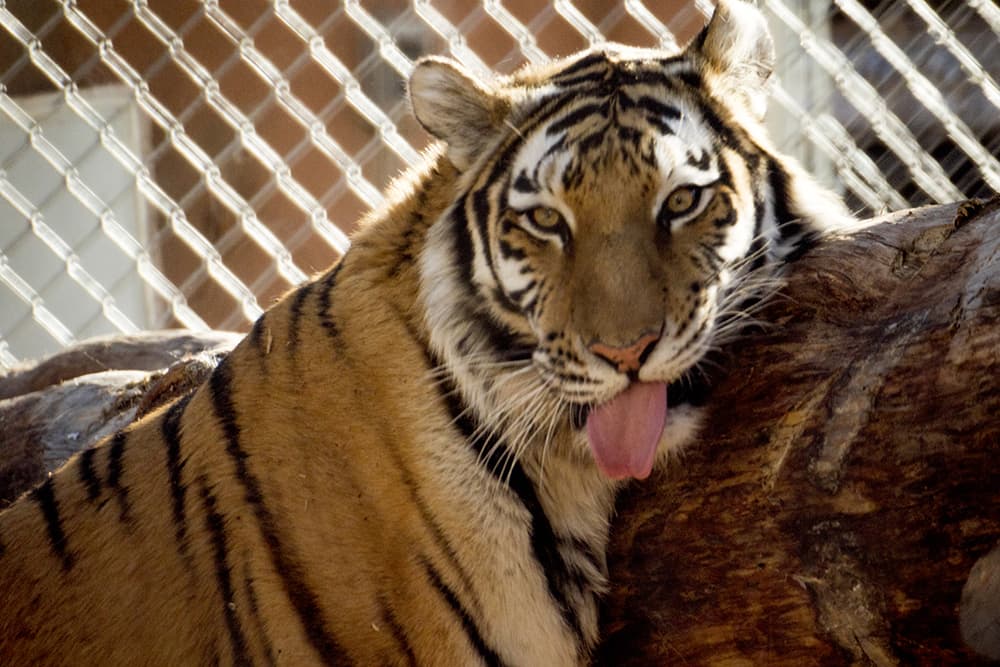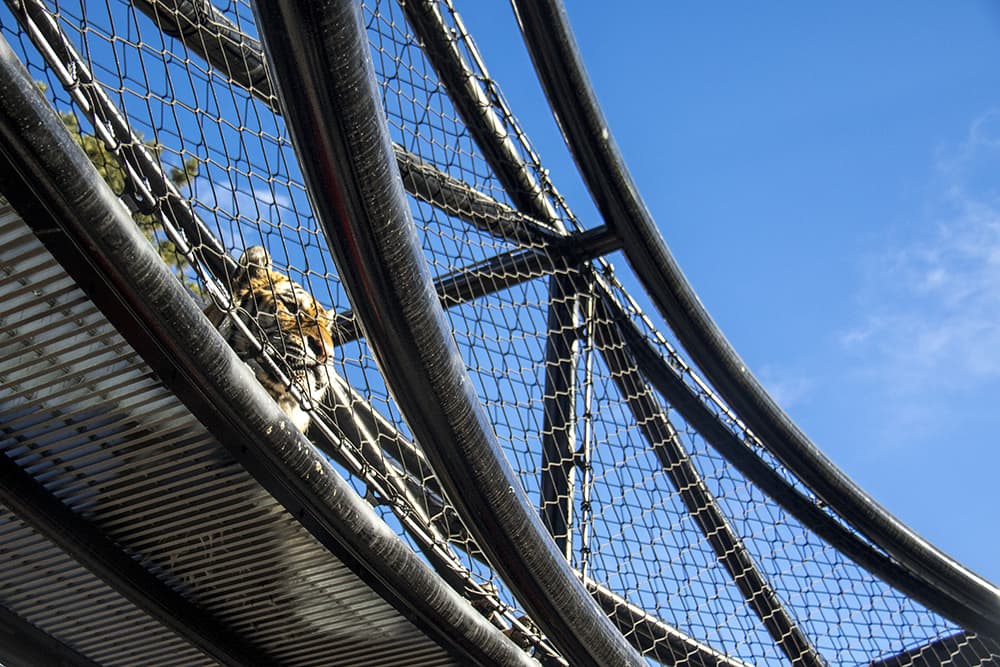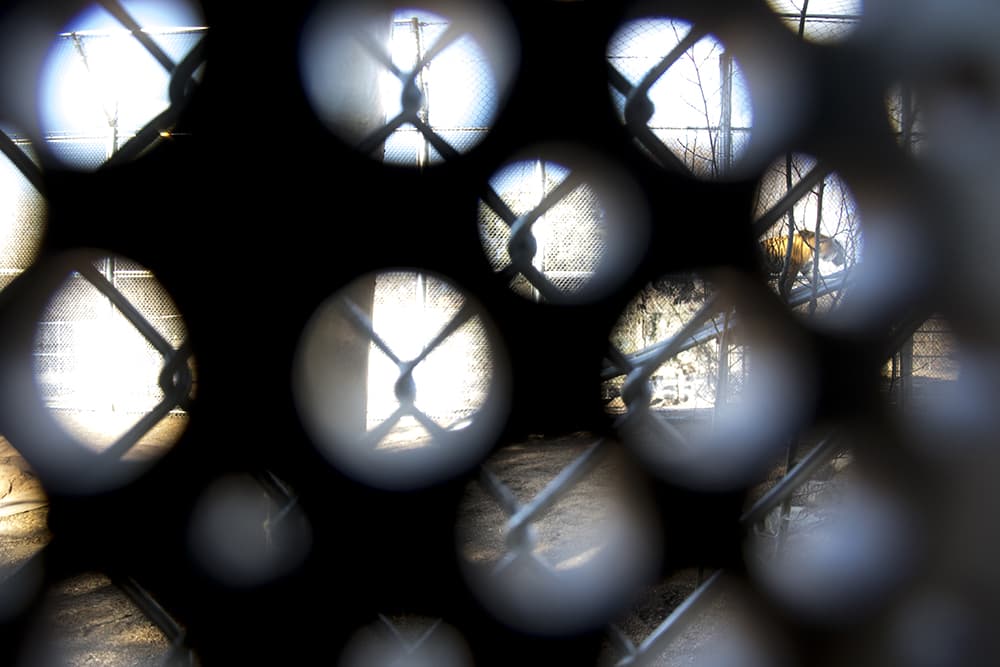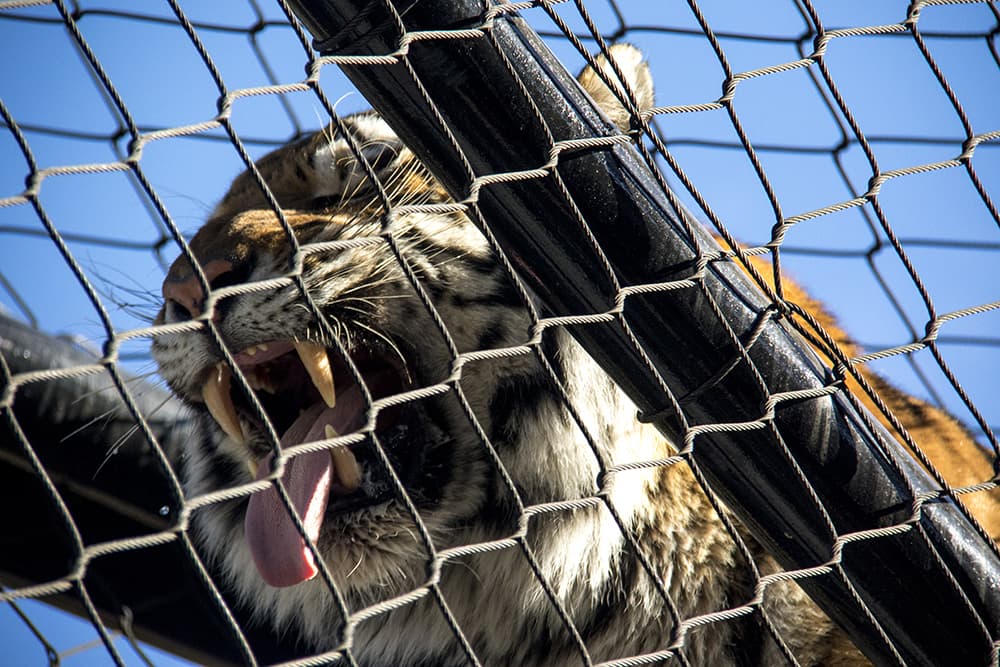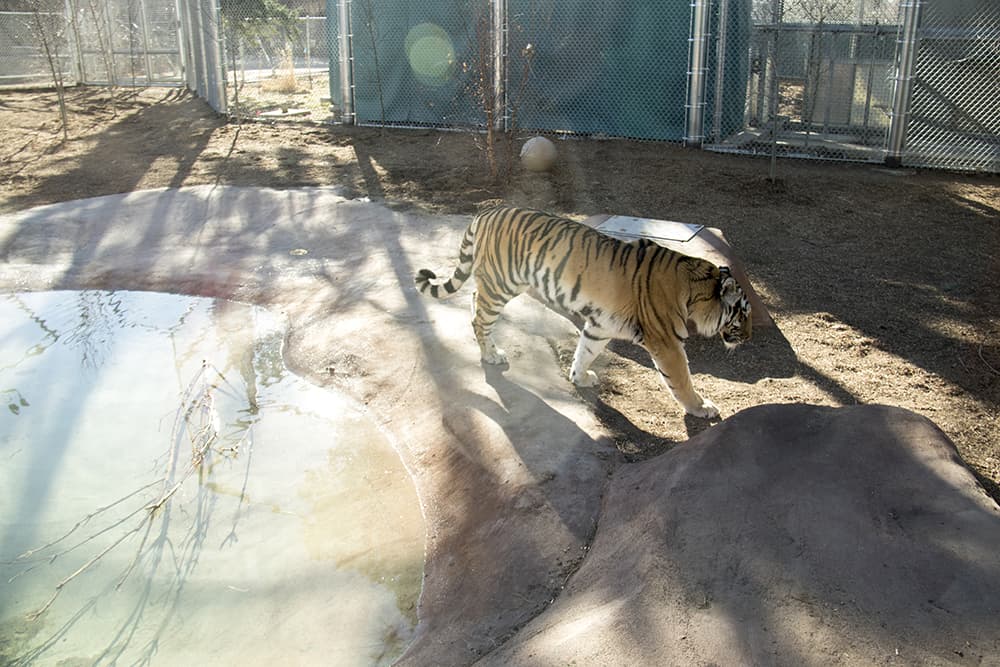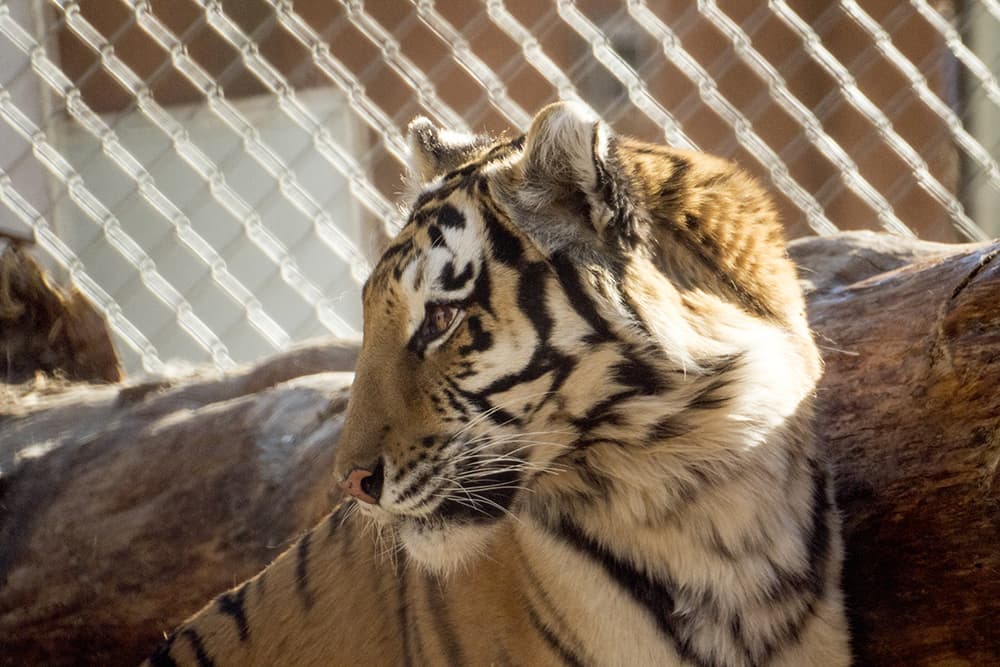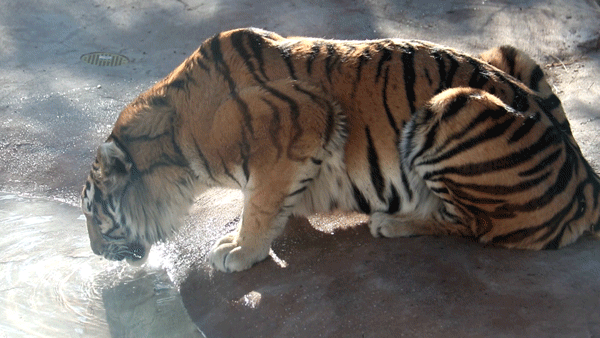
One of the Denver Zoo's tigers christened the catwalk above his new enclosure Wednesday by marking it as his own during the facility's grand opening. This gesture was followed by a glisten in the air and an audible reaction from the crowd of donors and dignitaries below.
"It's good luck," said Rebecca McCloskey, curator of primates carnivores, "And I'm sticking to it."
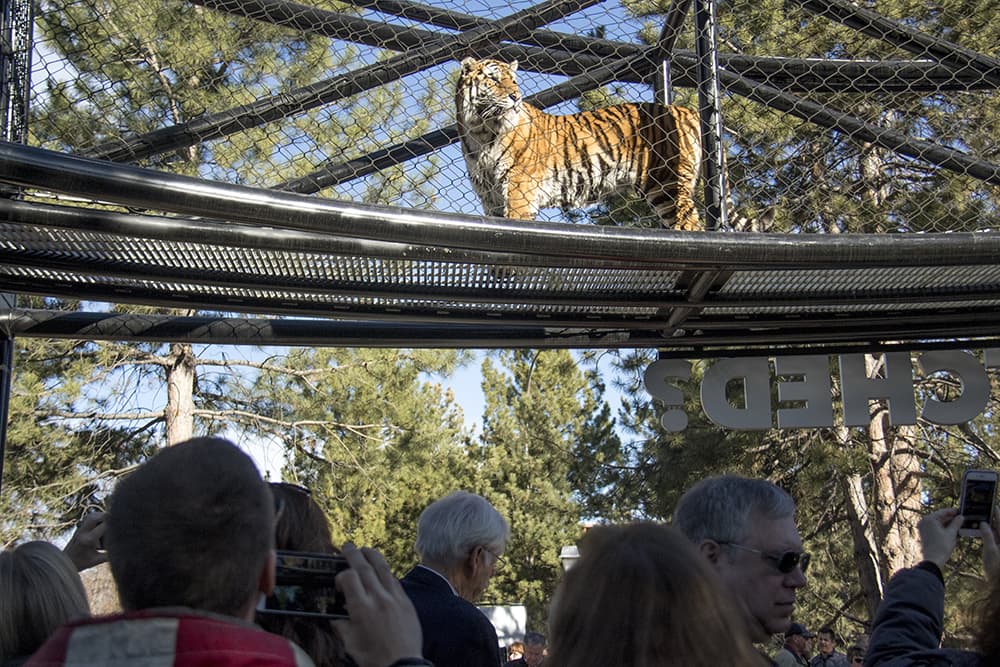
The three tigers here are still settling in. Because of that, and because the one female here has entered a breeding cycle, the two boys have been actively marking their territories.
The new habitat, branded as "The Edge" allows zoo-goers to get freakishly close to these massive felines. A press release says that the name refers both to the proximity visitors can get to the tigers but also as a reminder that the species, the Amur or Siberian tiger, is at the edge of extinction.
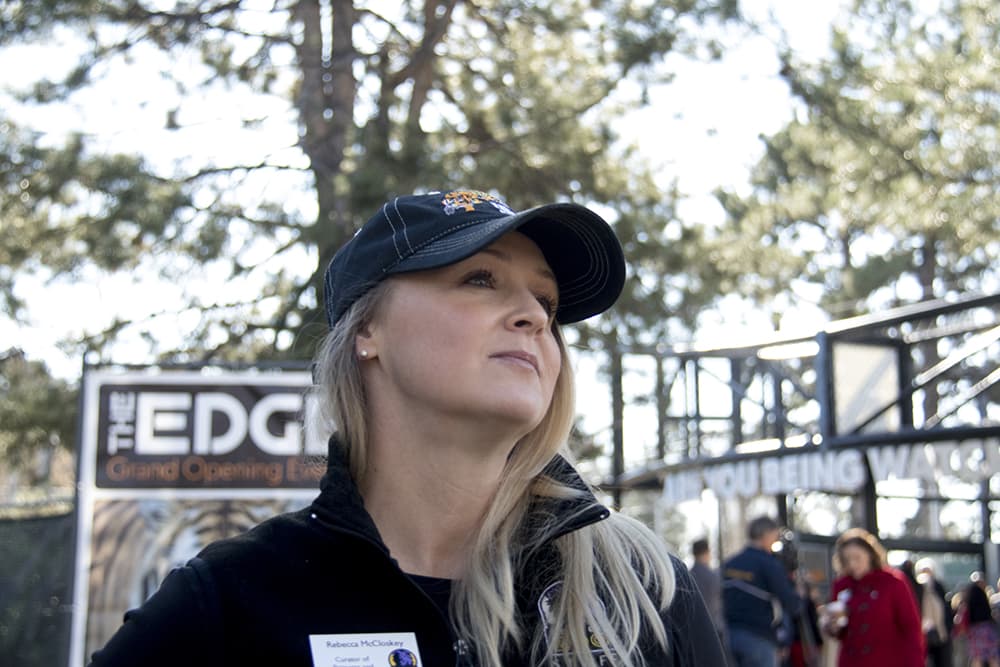
It's that second factor that really drives this display.
"Amur tigers are one of the most critically endangered animals in the world," McCloskey said. "There's less than 400 of these animals in the wild. That number is too low."
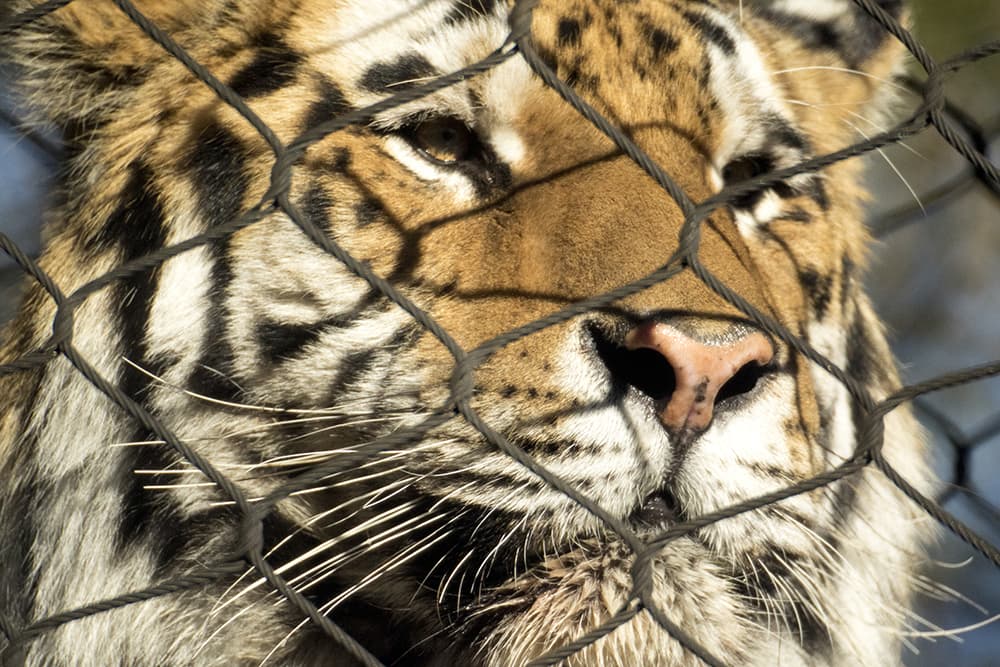
The tiger's natural habitat stretches from eastern Russia to parts of China and North Korea. Poaching and habitat destruction has pushed this species to endangerment; similar forces have made three other species extinct since 1900.
A portion of the proceeds from the exhibit and sales of fuzzy tiger ears will be donated to anti-poaching efforts in Russia, McCloskey said.

But the zoo might someday play an even more vital role in protecting the Siberian tiger. If the wild population actually does become extinct, their captive cousins could be the key to re-introducing them. Similar to the Svalbard Global Seed Vault, which aims to keep plant species safe from a volatile global climate, captive tigers like these here would be some of the last sources of their own genetic code.
"If the wild tigers don't make a huge, tremendous comeback," McCloskey said, "that could be the only way that we have Amur tigers in the world."
In this interest, getting zoo-goers so close to the patterned cats might also help inspire an attitude of conservation before it's too late.
You can click and drag around the exhibit below:
